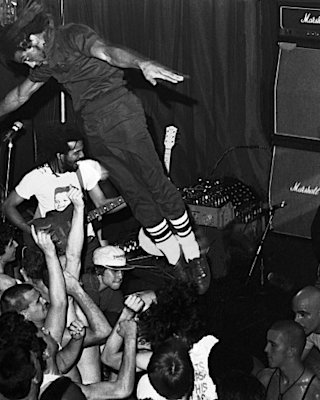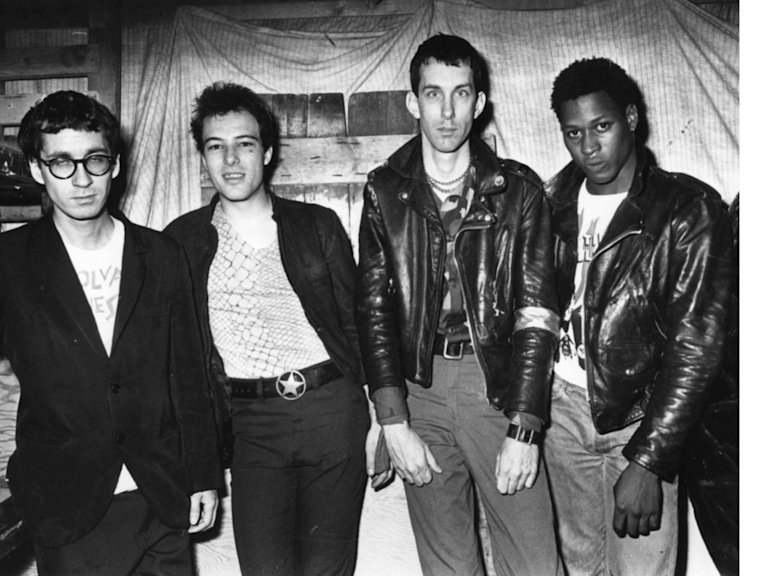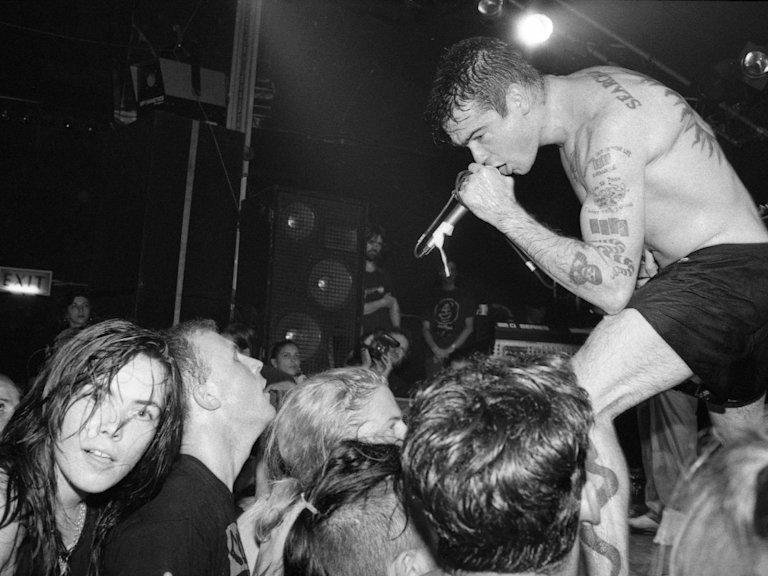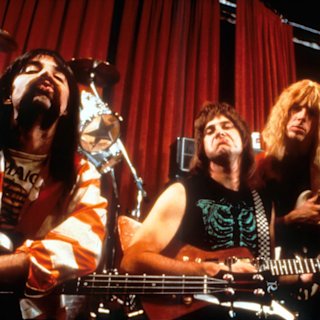
Bad Brains performing.
Primarily created by disillusioned young people railing against commercialism, hardcore punk was all about short and intense songs that amplified political statements. That one of hardcore’s biggest early bases was in Washington DC was no coincidence.
The capital of the US was – and still is – a hotbed of social issues, power struggles and potential for revolution. In the White House, politicians laid down laws that changed the lives of the country’s citizens. In the city’s hardcore scene, bands shared their own manifestos that felt like they wielded a similar life-altering impact. Songs by Bad Brains, Minor Threat, and Fugazi were confrontational about discrimination and racism, and sometimes advocated for a straight-edge (alcohol and drug-free) lifestyle, too. Whatever the message, this incarnation of punk was always quick and to the point – and full of energy and vitality. The community fostered DIY ethics, with many hardcore shows self-promoted events held in basements, garages, or other ad-hoc venues. It was also a scene on the move. Bad Brains – who innovated on punk and metal in primal fashion on their 1982 cassette-only debut album – performed so passionately that they were effectively banned from gigging in their hometown. They made the move to New York thereafter, becoming patrons of CBGB as the NYHC (New York hardcore) scene grew on the East Coast.


Whatever the message, this incarnation of punk was always quick and to the point - and full of energy and vitality.
LA bands like Black Flag, Circle Jerks, and Dead Kennedys, meanwhile, united runaways and misfits on the West Coast. Their songs were anti-establishmentarian and borderline anarchic in nature. This scene was captured at its breaking point in Penelope Spheeris’ incendiary 1981 documentary ‘The Decline of Western Civilization’ – before mosh pits, studded leather and homemade tattoos began to define the community thereafter. The film caused such a stir that LAPD Chief of Police Daryl Gates attempted to prohibit it from exhibition in 1981. Instead, it ended up in the United States National Film Registry in 2016, having been deemed worthy of preservation for being “culturally, historically, or aesthetically significant”. It’s no surprise. Hardcore’s remarkable self-sufficiency remains palpable in underground scenes around the world, where fresh waves of musicians and fans alike are still cutting out the middle man and creating impassioned communities. Politically, the outspoken nature of the bands still inspires many to make their voices heard – be that in music, protest, or in everyday life.
Recommended
All

